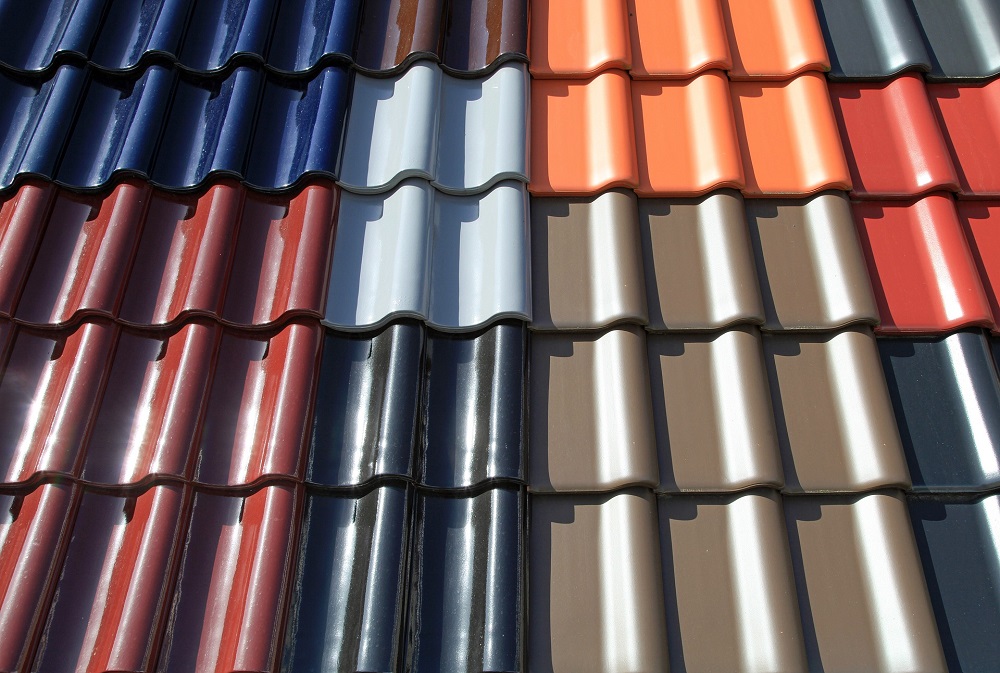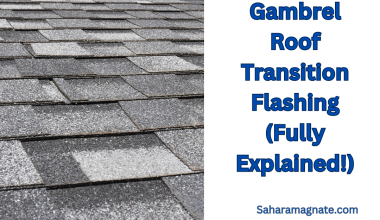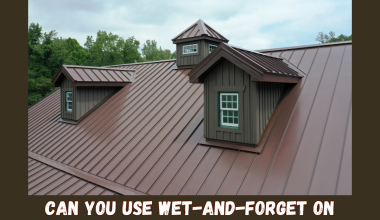Installing a metal roof is one of the best investments for your home. It’s durable and esthetically pleasing, and you won’t have to worry about it leaking.
But before you start nailing it down, you’ll need to know how to cut metal roofing to fit valleys.
Cutting metal for a valley is a bit trickier than cutting a straight line, but with the right tools and techniques, it doesn’t have to be intimidating.
In this article, we’ll walk you through everything from safety tips to tips for cutting your metal roofing in just the right place so your installation looks professional and lasts for years.
How to Cut Metal Roofing To Fit Valleys
Cutting metal roofing to fit valleys can be tricky, but it’s a necessary skill for anyone working on a roof. Luckily, there are some tips and tricks you can use to make sure you get the job done right.
The first step is to measure the valley length you’re trying to cover. Measure from ridge to ridge, then adds at least six inches of overlap for each wall on either side of the valley.
Once you have your measurements, mark where to cut your panels. It helps to use chalk or a level line as a guide when cutting. This will ensure that your lines are even and parallel.
When cutting the panels, it’s best to use tin snips or aviation snips with long handles. This will give you better control and make it easier to make precise cuts.
Ensure there is no tension on the sheet when cutting because this can distort your lines and ruin your cut.
Once your panels are cut, install them according to manufacturer instructions, and you’re done! With these tips in mind, cutting metal roofing for valleys should be a breeze!
Key Materials Needed
Cutting metal roofing for valleys is a complex job and requires a few key materials. Before you get started, make sure to have the following items ready:
- An electric drill or impact driver
- Long screw bit
- Measuring tape
- Heavy-duty scissors or tin snips
- A utility knife with extra blades
- Hammer and a sharp chisel
- Safety goggles and scissors
- A set of end cutters
- Rags to clean up metal particles
Having all of these items on hand before starting your project will ensure that you have the right tools needed to make the cuts necessary for a successful installation.
Plus, having an electric drill or an impact driver will help you drill holes in the metal sheets and ensure everything is secure.
Prepping the Roof for Valley Cutting
Now that you know why metal roofing is an excellent option for valley cutting, it’s time to get into the nitty-gritty of the task.
Before cutting metal roofing to fit the valleys, there are a few preparation steps to consider;
Clear and Trace Your Cut Lines
Once you have your metal roofing in place and understand where it will be cut, clear any debris from the area, including twigs and leaves that could get trapped in your cut lines. Once the area is clean, trace your cut lines with a chalk or marker pen.
Use A Circular Saw With a Metal Cutting Blade
You’ll need to use powerful saws specifically designed for cutting metal. Any standard circular saw will do, but ensure it has a metal cutting blade with 24 teeth per inch or more—this helps create clean edges without tearing or fraying the sheet metal.
Place Wooden Block Under Cut Line
If possible, it’s best to place something underneath the metal sheets near your cut line to make cuts without damaging other pieces of metal below them.
A 2×4 or 2×6 wooden block placed directly under your cut line should suffice for keeping other pieces of steel from being damaged during cutting.
By prepping your roof correctly before you start cutting, you’ll have an easier time getting clean cuts with minimal discoloration and fraying that can occur when working with sheet steel.
Measuring and Marking the Valleys for Cutting
Now that you’ve got all the materials you need and a clear workspace, it’s time to measure and mark the metal roofing for cutting. Don’t worry! It’s not as complicated as it might sound.
Here are the steps you need to follow:
- Measure the valley’s length in two dimensions—lengthwise and widthwise—with a measuring tape.
- Mark the measurements on the metal roofing panels with a pencil or marker.
- Cut along the marked lines using an appropriate cutting tool, such as an angle grinder with a metal cutting disk or a drill with a hole saw attachment for making curved cuts on corrugated metal sheets.
- Wear safety equipment like safety glasses, ear protection, and gloves for your own protection.
- Once you have cut out the panels to fit the valley, install them on the roof according to manufacturer instructions, overlapping each panel by at least 2-3 inches (5-7 cm).
Remember, accuracy and precision are vital when measuring and marking valleys. Hence, they fit correctly in your roof’s structure—it’s worth taking your time in this step because making mistakes here will lead to big problems down the road!
Cutting the Metal Roofing for a Perfect Fit
You know you can trust metal roofing for your valleys, but have you ever wondered how to get the shape just right? It’s not a one-size-fits-all situation, for sure.
Here’s what you need to do to get that perfect cut.
Measure Twice, Cut Once
You want to ensure your measurements are accurate to get the perfect fit. Make a template from cardboard or paper and trace it onto your metal roofing.
This helps you avoid measurement errors and ensures that your cuts are consistent.
Use the Right Tools
To keep your safety in mind, use tools for cutting metal, like an angle grinder with a cutting wheel or sawzall with a metal-cutting blade.
You’ll also need snips, a screwdriver, and a drill with metal drill bits to fasten the panels into place.
When cutting metal roofing, be sure to:
- Wear eye protection and gloves when handling materials or operating power tools
- Cut along the marked lines slowly and steadily
- Secure the pieces into place with screws (the extra security here will help make sure there are no leaks).
By following all these steps and using the right tools, you’ll find that cutting metal roofing for a valley is easy enough for any DIYer—you can get that perfect cut and be on your way!
Installing the Valley Flashing
When working with any roofing material, your valleys should be the priority—but especially with metal roofing.
Before cutting your panels to fit, lay out the flashing along the valley and ensure it’s properly attached to both sides.
It’s important that the flashing is installed properly and secured down, so check in with your local building codes to determine any special requirements for installation.
Once you’re sure your valley flashing is installed correctly, you can start cutting the panels for installation.
The most important part of this step is ensuring you get a tight fit between the panels and the valley flashing so there are no gaps for water to sneak through! Here are some tips for how to do just that:
- Measure your panels carefully and cut them in accordance with Valley Flashing specifications
- Make sure you leave an overhang on both sides of the Valley Flashing—this will create a watertight seal
- Check your measurements twice before making cuts
- Use a jigsaw or circular saw fitted with a fine-toothed blade to make clean, precise cuts (or invest in a professional metal shear)
- Ensure that panels are placed tightly against each other and fastened securely
- Invest in high-quality sealant to ensure all edges will stay waterproof
By following these steps, you should have no trouble getting an airtight fit between your metal roofing and the Valley Flashing, ensuring your roof stays watertight no matter what Mother Nature throws its way!
Conclusion
Installing metal roofing over valleys can be tricky, but it doesn’t have to be difficult. You can easily cut metal roofing to fit your valleys with the right tools, measurements, and practice.
Knowing how to measure and cut metal roofing materials correctly can save you time and money.
Whether you’re a seasoned roofer or a do-it-yourselfer, understanding the proper techniques for cutting metal roofing for valleys will help you achieve high-quality results.
It may take some practice, but you’ll soon be a pro at cutting metal roofing to fit your valleys.






